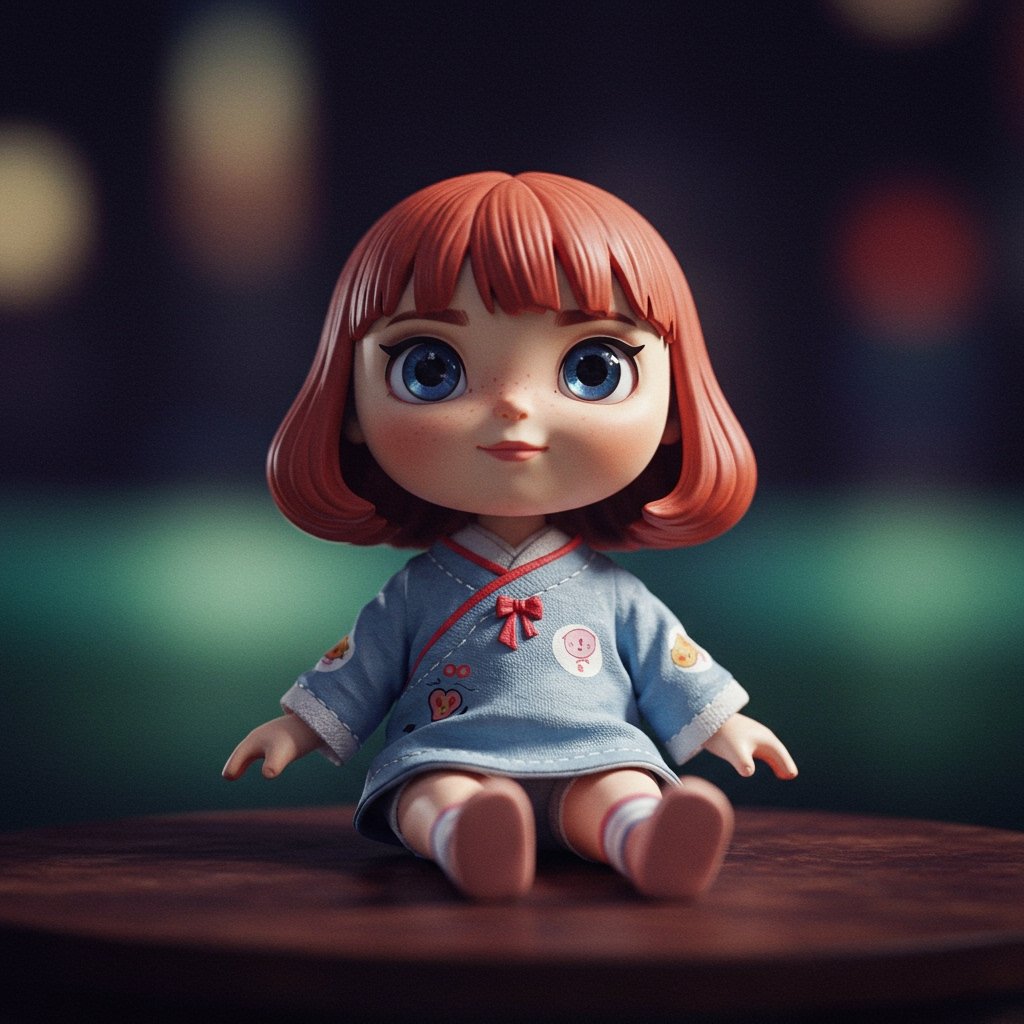Labubu, a seemingly simple art toy originating from China, has transcended its niche origins to become a bona fide global sensation. More than just a collectible doll, it has rapidly established itself as a significant pop culture symbol and a notable fashion statement, particularly resonating with and gaining widespread popularity among Generation Z collectors worldwide.
The doll’s meteoric rise is intrinsically linked to the powerful amplification mechanisms of modern social media. Platforms like TikTok and Instagram have served as fertile ground for Labubu’s popularity to flourish, driven by user-generated content showcasing collections, unboxing experiences, and the integration of the figures into daily life and fashion narratives. This digital grassroots momentum was further propelled into the mainstream by high-profile celebrity endorsements, including notably from international superstar Rihanna, who was pictured with a Labubu figure, significantly amplifying its visibility and desirability on a global scale.
Powering a Corporate Success Story
The commercial impact of the Labubu phenomenon has been immense, transforming the fortunes of its parent company, Pop Mart. The staggering success driven by Labubu has been a primary factor in the rise of Pop Mart’s founder, Wang Ning, positioning him as one of China’s wealthiest individuals.
Pop Mart, a company that specializes in collectible toys, made a significant move by launching an Initial Public Offering (IPO) on the Hong Kong Stock Exchange in December 2020. The IPO was a substantial event, valuing the company with an initial market capitalization of $12.5 billion and successfully raising $676 million. Since its listing, the company’s performance has been remarkable. Its shares have seen dramatic appreciation, nearly tripling in value by HK$365 billion in 2025 alone, according to company data. This surge in valuation reflects the strong investor confidence fueled by the brand’s growth, spearheaded by figures like Labubu.
The financial performance underscores the brand’s current dominance. Pop Mart’s most recent quarterly report highlighted a staggering 170% year-over-year increase in overall sales. Company executives have largely attributed this rapid growth trajectory directly to the explosive popularity and sustained demand for the Labubu series.
The Strategy Behind the Craze
A key element driving the widespread craze for Labubu, and Pop Mart’s products in general, is the strategic implementation of the \”blind box\” purchasing model. This method involves packaging the collectible figures in opaque boxes, so buyers do not know exactly which specific figure from a series they are purchasing until they open the package. This introduces an element of chance and surprise, effectively transforming the simple act of buying a toy into a gamified, exciting experience.
Complementing the \”blind box\” approach are limited releases and special editions. This strategy cultivates a sense of urgency and exclusivity among collectors, encouraging immediate purchases and fostering a vibrant secondary market for trading and resale of rare figures. The thrill of potentially discovering a highly sought-after ‘secret’ figure or completing an entire series fuels repeated purchases and deepens consumer engagement.
The community aspect plays a vital role. Enthusiasts actively engage on social media platforms and dedicated online forums not just to showcase their burgeoning collections but also to participate in trading networks to acquire missing figures or offload duplicates. Furthermore, the aesthetic appeal of Labubu figures has led many collectors, particularly within the Gen Z demographic, to incorporate them into their personal style, treating the dolls as accessories that reflect their identity and participation in a trending cultural movement.
From Tech District to Global Toy Empire
The foundation for Pop Mart’s current global standing was laid by its founder, Wang Ning. The 38-year-old entrepreneur, a graduate of Zhengzhou University, embarked on his retail journey in 2010. His first Pop Mart store opened in Beijing’s Zhongguancun district, an area known as a hub for technology companies and innovation. Initially, the store’s focus was broader, stocking items like comics and mobile phone accessories. However, Wang Ning recognized the burgeoning interest in collectible culture and strategically pivoted the company’s focus towards designer toys and art figures.
This pivot proved prescient. While Labubu is the current flagbearer of Pop Mart’s success, the company had established a strong foothold in the market with earlier popular series, most notably the Molly doll series, which also contributed significantly to the company’s growth and brand recognition following its introduction in 2016. This history demonstrates Pop Mart’s experience in identifying and cultivating successful collectible lines, laying the groundwork for Labubu’s unprecedented boom.
Drawing Comparisons
Pop Mart’s remarkable success and the intense customer loyalty it has cultivated has led industry analysts and observers to draw comparisons to other major players in the collectibles market, such as the American vinyl figure giant Funko. However, the brand’s emphasis on design, limited availability, and its integration into lifestyle and fashion have also prompted comparisons, albeit perhaps aspirational, to the dynamics seen in the luxury fashion world, where scarcity and brand identity drive demand and command premium prices. The passionate community, the focus on aesthetics, and the secondary market activity all echo elements found in high-fashion or sneakerhead subcultures.
In conclusion, Labubu is far more than just a doll; it represents a convergence of strategic marketing, savvy use of social media, a compelling product design, and a business model perfectly tuned to the desires of modern collectors, particularly Gen Z. Its journey from a Chinese art toy to a global sensation underscores the evolving landscape of pop culture and consumer markets, solidifying Labubu’s place as a key figure in the contemporary collectible world and a powerful engine behind Pop Mart’s ascent into the ranks of significant global companies.





